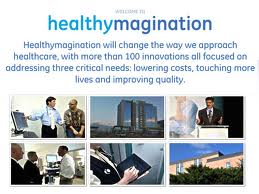 I love this time of the year because Giving USA allows fundraising professionals to jump in Mr. Peabody and Sherman’s “Way Back Machine” (aka WABAC machine) and look at what happened in philanthropy in the previous year. This activity has become an event of sorts. Reports are released. There are webinars. The media covers it, and then there is lots of chatter throughout the sector.
I love this time of the year because Giving USA allows fundraising professionals to jump in Mr. Peabody and Sherman’s “Way Back Machine” (aka WABAC machine) and look at what happened in philanthropy in the previous year. This activity has become an event of sorts. Reports are released. There are webinars. The media covers it, and then there is lots of chatter throughout the sector.
For those of you who are hoping for a quick down-n-dirty synopsis, here you go:
- Overall, charitable giving is up, but it is small and reflects our slow economic recovery (1.5% increase when adjusted for inflation.)
- An increase in corporate giving was robust (but it still only accounts for less than 6% of total private sector fundraising.)
- Individual giving is still the biggest piece of the pie (approximately three-fourths of philanthropy . . . DUH!)
- The sector is still nowhere near approaching its pre-recession peak. (at this pace, it may take another five to eight years to get back to 2007 charitable giving levels . . . welcome to the “New Normal” for non-profit organizations.)
 In a nutshell, slow-and-steady progress which is a re-run from the last many years of Giving USA reports. Is it just me or is this beginning to feel a little bit like that scene in the movie Groundhog Day?
In a nutshell, slow-and-steady progress which is a re-run from the last many years of Giving USA reports. Is it just me or is this beginning to feel a little bit like that scene in the movie Groundhog Day?
Maybe you will feel better if you click the Giving USA link I provided in the first paragraph, purchase the report, and try smashing it like Bill Murray did to that alarm clock in the movie. LOL (Well, it is worth a try because nothing else seems to be working. Right?)
For me, this time of the year isn’t so much about the excitement and the numbers. Instead, it is a gentle reminder that benchmarking opportunities exist all around us, and non-profits should invest more of their time in benchmarking if they want to improve their performance.
I was reminded of this while on the Giving USA website where I ran into the following testimonial from Heidi Jark, who is the Managing Director & Vice President at The Foundation Office at Fifth Third Bank:
“I look forward to the Giving USA report every year to better help me work with not for profit organizations and our private foundation clients. The data helps me to better understand the philanthropic world around me and, many times, confirms what I see on a day to day basis. We can better serve our clients when we have research data. It helps us to better explain and structure gifts to meet both the needs of our individual clients and the missions they wish to advance.”
I think Heidi and I are kindred spirits. While she didn’t specifically talk about benchmarking, she is in the ballpark.
Some of you might still be a little hazy on the concept of benchmarking so here is a quick thumbnail sketch:
- It is a process where you: 1) measure your performance, 2) measure like-minded organizations’ performance, and 3) compare and contrast to draw conclusions on how well you’re doing.
- It is a process by which you will manage and improve your performance.
- It goes beyond measurement, it also involves looking for and using best practices that make sense for an organization of your size.
 Here are some resources for those of you who are intrigued and want to learn more:
Here are some resources for those of you who are intrigued and want to learn more:
- Christine Letts, William Ryan & Allen Grossman at tgci.com: “Benchmarking: How nonprofits are adapting a business planning tool for enhanced performance“
- Author Jason Saul at amazon.com: “Benchmarking for Nonprofits“
- Wikipedia: Benchmarking
As I thumb through the Giving USA numbers and reports, I think I’d be asking myself some of the following questions if I were still on the front line running an agency:
- Did our private sector fundraising increase last year? Did it mirror the national numbers? Better? Worse?
- How well did other local non-profit organizations who are approximately our size do last year?
- What did those organizations that did better than our agency and better than the national benchmarks do differently?
- What changes (if any) should we look at making to next year’s written resource development plan to improve our fundraising performance?
Does your organization do any benchmarking? Do you benchmark your fundraising efforts? Programming? Marketing? Please share your thoughts and practices in the comment box below. We can all learn from each other.
Here’s to your health!
Erik Anderson
Founder & President, The Healthy Non-Profit LLC
www.thehealthynonprofit.com
erik@thehealthynonprofit.com
http://twitter.com/#!/eanderson847
http://www.facebook.com/eanderson847
http://www.linkedin.com/in/erikanderson847








